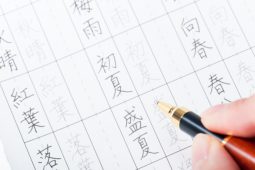In another article, we went over goal setting and putting together a plan.
This time, we should look at all the various learning materials you can use, and maybe choosing some that will work for you. This is where it gets really dizzying. There are enormous numbers of learning materials available to learners of all levels these days, and it can be almost too much work to pick ones that work for you. I know it was hard for me! So here are a few tips to get you started:
Think Locally
If you are in Japan, learn like the Japanese do. There are tons of practice books and teaching materials for children around, and many of them are very affordable. The book sections of 100-yen shops are full of children’s drills and storybooks, which are perfect for beginning reading practice.
Also, give Japanese study practices a try. The concept of flashcards is integral to Japanese study in all kinds of subject. You’re sure to see younger students on the trains with little cards bound with a ring. These are perfect for word/symbol learning!
For people who are more into audio-visual practice, Japanese children’s TV is a great resource. Shows like the morning programs on NHK Education (NHK Eテレ), including おかあさんといっしょ (Okaasan to Issho, With Mom); 英語で遊ぼう (Eigo de Asobo, Let’s Play in English); 日本語で遊ぼう (Nihongo de Asobo, Let’s Play in Japanese) are all very good ways to not only learn words and communication, but a good way to get into Japanese culture as well.
Go Traditional
There are a few textbooks widely available at local bookstores that are the real go-to for most Japanese learners in Japan. The most popular ones appear to be the Genki books from The Japan Times and Japanese for Busy People from AJALT. They now include audio and video files for a more versatile study session, so it might be just the thing for those who struggle to find a place to start.
These textbooks cover all kinds of levels, with all kinds of approaches, but for me personally, it took a bit too much focus to keep going. But for other types of learners, they work really well. Give them a try!
Everything Is Online Now
The internet is a very good place for learning Japanese. There are all kinds of websites offering a huge range of services, from full-on learning sites like WaniKani, to simplified reading and video sites like NHK News Web Easy. There are also more versatile sites like AnkiWeb to let you create virtual flashcards for anything you want to learn, as well.
One I highly recommend is Tae Kim’s Guide to Learning Japanese. It has a huge resource of grammar explanations, vocabulary, and more to help you on your way. Skillful use of this site could be all you really need!
There’s an App for That
And finally, in our always-online smartphone drenched society, there are enormous numbers of apps to help you learn. Flashcard apps like TinyCards or AnkiDroid are perfect for remembering words, and there are tons of free dictionary apps (my favorite is simply called Japanese) that integrate word lists and study functions as well.
Some more interesting ones for me are TangoRist, an app that serves new articles with vocabulary difficulty ratings based on JLPT level, and Yomiwa, an app with a built in OCR reader that will give you a reading and lookup of characters in a picture, or through your camera in real-time.
There is a lot of variety that you can fit to your own needs and learning style. There are drawing functions for people who are better at learning through action, there are video apps for visual learners, and spaced repetition software (SRS) apps (wikipedia) for people who react well to flashcards.
Putting them all Together
Using the learning materials, you finally select, then, you can get started. Follow your plan, but don’t be afraid to adjust it as you go. Keep studying, but don’t burn yourself out. Change things up frequently so you don’t get in a rut. And always remember, you’re learning a language to communicate with people. The number one way to get better at it is doing just that: communicate!








